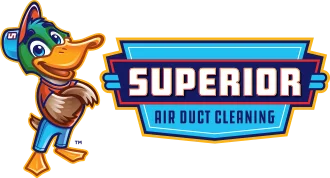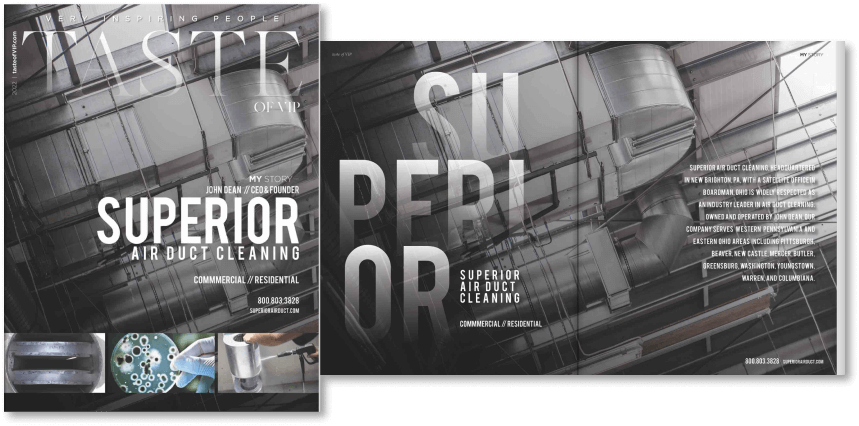Your Heating, Ventilation, and Air Conditioning (HVAC) system is one of the most crucial elements in your home. Many people don’t appreciate the convenience of their HVAC system until the thermostat stops working. If you want to learn more about the importance and convenience of the modern HVAC system, a quick history will help!
Today, the team at Superior Air Duct Cleaning gives a brief history of HVAC systems and reflects on how much the industry has evolved over the years.
Related Post: How Does an Air Duct System Work?
A Look at History
The mid-1700s completely transformed the HVAC industry, mainly due to Benjamin Franklin’s development of the first Franklin wood stove. James Watt’s steam engine also expedited the Industrial Revolution, as he made the engines more efficient and cheaper to run. Around this time, water heating systems were on the upswing as well.
Franklin’s and Watt’s developments created a ripple effect in the industry that continued through the following century. In the 1830s, Dr. John Gorrie came up with the idea for a cooling system. His machine used compression to create buckets of ice, where the air was blown over the ice, and the surrounding area became cooled. Dr. Gorrie’s invention paved the way for future advancements in the HVAC industry.
After Gorrie came Thomas Edison, who patented the lightbulb in 1880. A few years later, Warren S. Johnson patented the first thermostat, and rapid progress was made in both heating and cooling at the start of the 20th century.
Related Post: The Average Lifespan of HVAC Systems
Timeline Of Memorable Modern Events
1902: Willis Carrier, who is considered the inventor of modern air conditioning, created a machine that helped keep paper from being damaged by humidity during manufacturing. Similar to Dr. Gorrie’s machine, air blew over cold coils to control the temperature.
1905: Albert March discovered the alloy chrome, which gave electric heaters the resistance wire they needed in order to work.
1925: This was when air conditioning went to the movies. Since the theater’s audience size and profits were both decreasing, Carrier convinced the Rivoli Theater in New York City to add one of his air conditioning systems. It was a great success, as many crowds gathered to not only take in a movie but also enjoy cool relief from the sweltering summer heat.
1931: Inventors H.H. Schultz and J.Q. Sherman created the first individual air conditioning unit made to perform on window ledges. The public had access to these devices, but the units were too expensive for most people.
1935: Scientists invented convection wall heaters that used a coal furnace, electric fan, and ductwork throughout a home.
1939: Packard became the first automobile manufacturer to offer an air conditioning unit in its cars.
1940s: Robert C. Webber created and popularized the direct exchange ground-source heat pump.
1950s: Air conditioners began to show major improvements from the early days of Carrier’s system. During the post-WWII economic boom, millions of AC units were installed in homes across the country.
1970s: Air conditioning was revolutionized during the 1970s. Ductless air conditioning systems were offered as an alternative to standard portable AC units. This new system allowed air conditioners to be used in ceilings and walls, instead of just windows. A new refrigerant called Freon was developed, which improved efficiency and gave homeowners a new level of comfort.
1970s: The energy crisis propelled the federal government to invest in HVAC research and technology. The cost of fuel had escalated, and America encountered a shortage of energy.
1994: Freon’s chemical compounds were causing a depletion of the ozone layer. Freon was banned in many countries, and scientists searched for more environmentally friendly coolants. Over the next decade, the federal government invested millions of dollars into research on air conditioning and refrigeration improvements.
2000: The upgrading of smart technologies allows homeowners to monitor temperature and control HVAC systems in their homes remotely. By 2007, 86% of American homes featured air conditioning.
Present Day
When you think of today’s advanced HVAC technology, you have to credit American resourcefulness. Variable fan speeds and multiple stages of heating and cooling are two exceptional advances. The development of energy-efficient technology has led to a surging number of HVAC variations in homes everywhere. Internet-connected systems are perhaps the most impressive recent creations, which allow consumers to control HVAC operation and airflow via smartphone apps.
Related Post: Why Air Duct Cleaning Is Needed Now and in the Future
Trust Superior Air Duct Cleaning
Has it been a while since you last had your air ducts cleaned? If so, let Superior Air Duct Cleaning help. When you choose Superior Air Duct Cleaning, you’re choosing a company that’s certified by the National Air Duct Cleaners Association. We strive to be the most advanced team of air duct cleaners around. Contact us in western PA or eastern OH today to experience our superior service.


